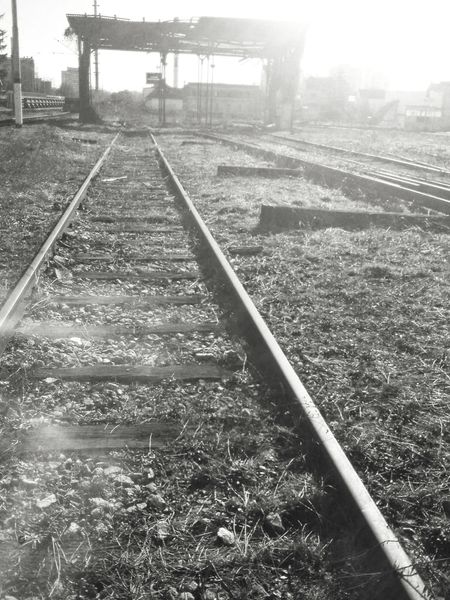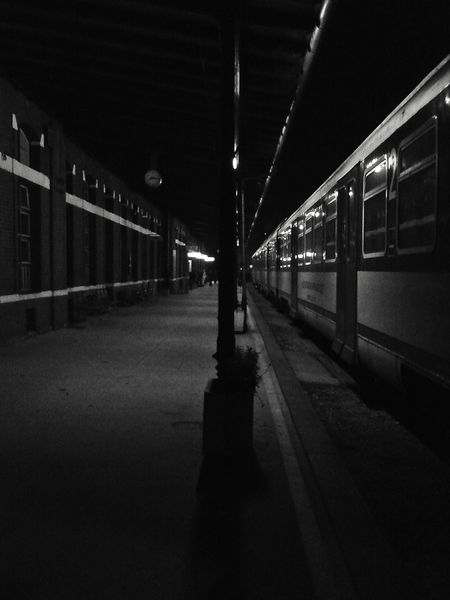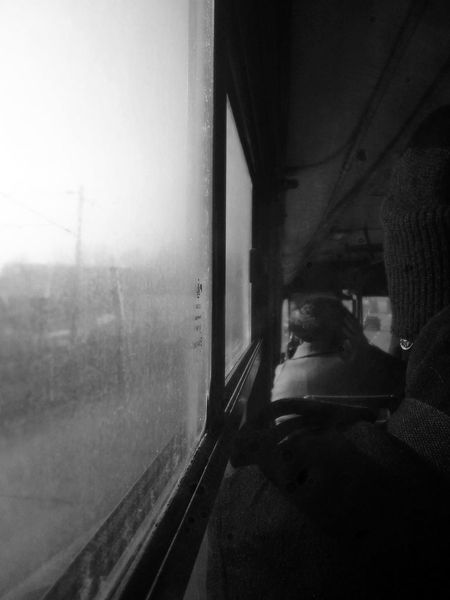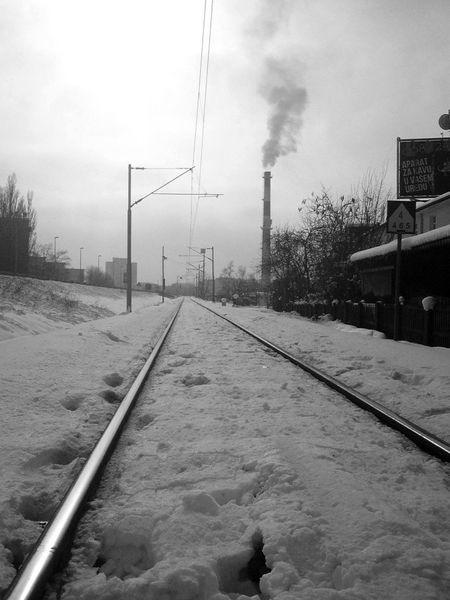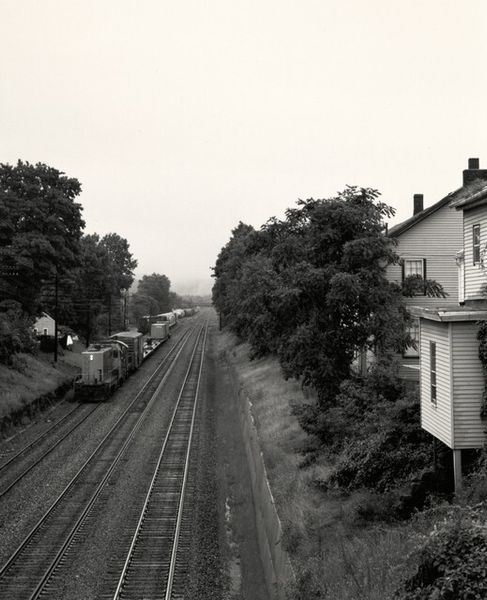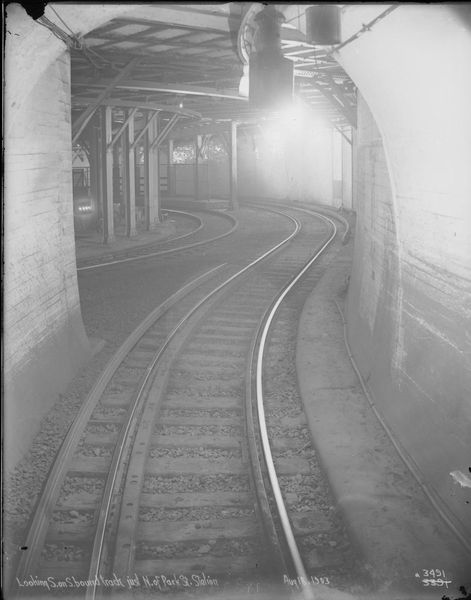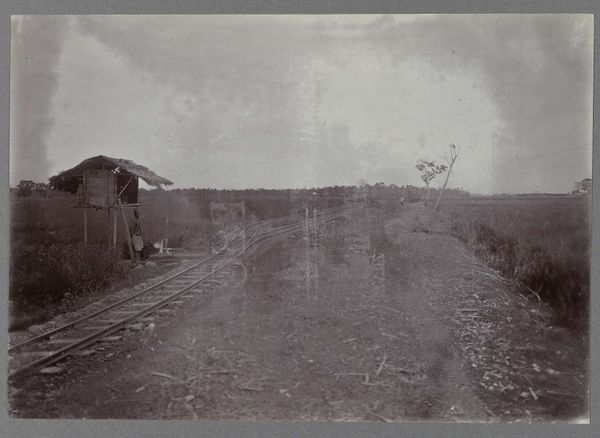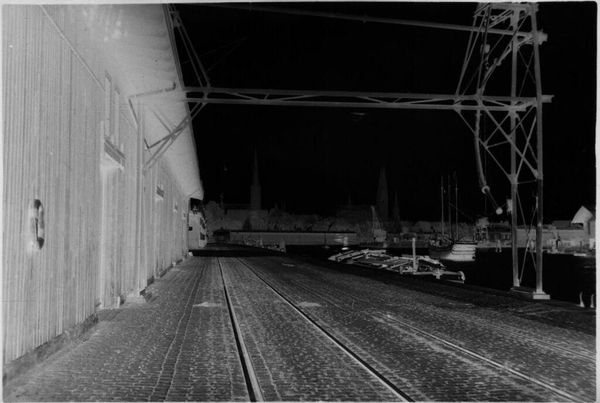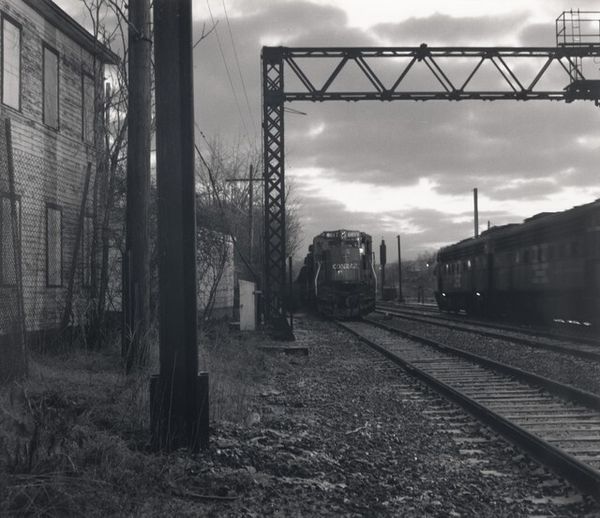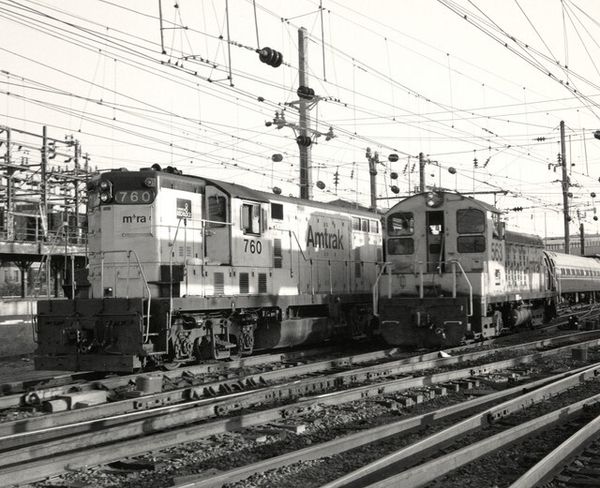
photography
#
black and white photography
#
landscape
#
black and white format
#
street-photography
#
photography
#
monochrome photography
#
line
#
realism
#
monochrome
Copyright: Creative Commons NonCommercial
Curator: Alfred Freddy Krupa's 2016 black and white photograph, "In the train", offers us a unique vantage point. What's your initial impression? Editor: Stark, almost claustrophobic, yet with this compelling pull towards the vanishing point on the tracks. The framing creates an immediate sense of voyeurism. Curator: I think the artist has used the camera to discuss our perception of reality through this limited circular porthole. The stark black and white format is not just aesthetic; it highlights the metallic surfaces of the tracks. The labor involved in creating these railways, their role in industrial transportation is hard to ignore. Editor: Indeed. And how they shape not just landscapes but also entire economies and social structures. Street photography such as this challenges traditional notions of "landscape" and its place in cultural expression. One wonders, what does this vantage say about class, labor and transit history? What segment of society had access to that “view?” Curator: Considering the perspective, one might question Krupa's decision to produce a photograph instead of, say, a drawing or painting. With that format and that black and white choice, are they acknowledging its lineage from earlier documentarian photographers and highlighting its status as a multiple, reproducible image? It certainly makes the viewer more conscious of the photograph as a commodity, readily shared and viewed. Editor: Good point, this piece has also made me question how art institutions engage with the accessibility that Krupa's choice enables. How are we displaying it? Who is really being reached and why? Curator: Ultimately, the choice to highlight the tracks through a round window shapes the viewing experience into a journey in and of itself, right? Editor: Yes, definitely. Thanks for broadening my understanding through our exchange!
Comments
No comments
Be the first to comment and join the conversation on the ultimate creative platform.
